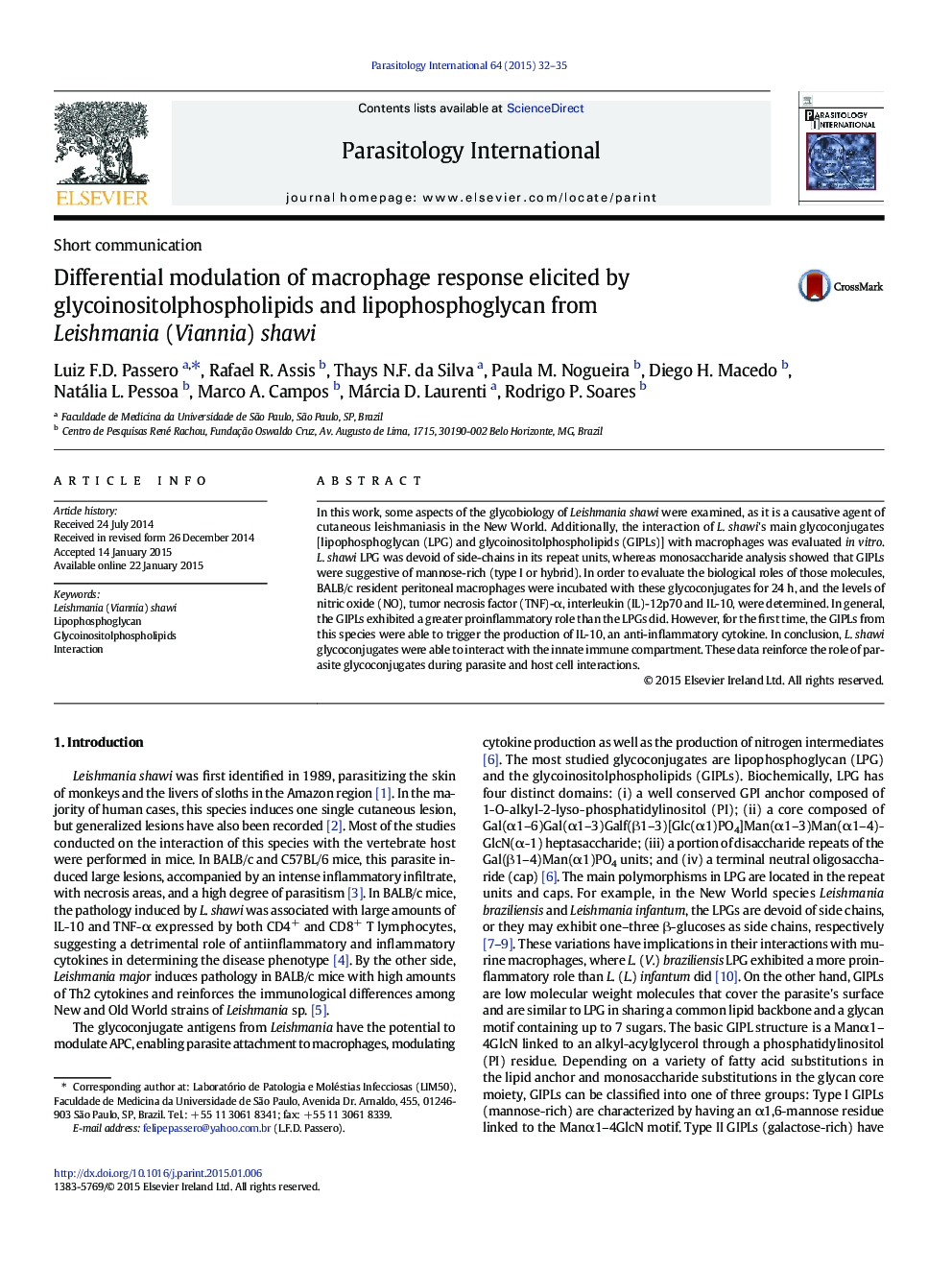| Article ID | Journal | Published Year | Pages | File Type |
|---|---|---|---|---|
| 3417847 | Parasitology International | 2015 | 4 Pages |
•Leishmania shawi LPG was devoid of side-chains in its repeat units.•GIPL was characterized as type I or hybrid.•GIPLs exhibited a proinflammatory role on macrophages than the LPGs did.
In this work, some aspects of the glycobiology of Leishmania shawi were examined, as it is a causative agent of cutaneous leishmaniasis in the New World. Additionally, the interaction of L. shawi's main glycoconjugates [lipophosphoglycan (LPG) and glycoinositolphospholipids (GIPLs)] with macrophages was evaluated in vitro. L. shawi LPG was devoid of side-chains in its repeat units, whereas monosaccharide analysis showed that GIPLs were suggestive of mannose-rich (type I or hybrid). In order to evaluate the biological roles of those molecules, BALB/c resident peritoneal macrophages were incubated with these glycoconjugates for 24 h, and the levels of nitric oxide (NO), tumor necrosis factor (TNF)-α, interleukin (IL)-12p70 and IL-10, were determined. In general, the GIPLs exhibited a greater proinflammatory role than the LPGs did. However, for the first time, the GIPLs from this species were able to trigger the production of IL-10, an anti-inflammatory cytokine. In conclusion, L. shawi glycoconjugates were able to interact with the innate immune compartment. These data reinforce the role of parasite glycoconjugates during parasite and host cell interactions.
Graphical abstractFigure optionsDownload full-size imageDownload as PowerPoint slide
